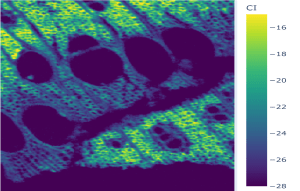Bioavailability of Carbon in Denitrifying Woodchip Bioreactors
Nonpoint sources of nitrogen (N) such as nitrate from agricultural and stormwater runoff are among the most intractable drivers of pollution and water quality impairments in the United States, contributing to eutrophication, harmful algal blooms, and hypoxia, which adversely impact the ecological health, economic, and recreational values of surface water systems including lakes, rivers, and large estuaries such as the Chesapeake Bay and the Gulf of Mexico. Woodchip bioreactors (WBRs) are promising and scalable biofiltration systems for removing nitrate from agricultural and stormwater runoff. Most WBRs consist of subsurface trenches filled with a carbon source (woodchip) designed to stimulate microbial denitrification (DN) to remove nitrate from a flowing runoff stream prior to its discharge into a receiving surface water system. The effectiveness of current WBRs is limited by the slow release of the bioavailable carbon (C) from the woodchip media required to support the growth and metabolism of DN bacteria. The overarching goal of this project is to probe, elucidate, and leverage the redox biogeochemical reactions that control the release and mobilization of bioavailable C from woodchip media to stimulate DN in WBRs. We perform this research using experiments in both field-scale bioreactors and laboratory model systems, and use techniques including X-ray fluorescence mapping and X-ray scattering to probe effects of transition metals like iron and manganese on the release of labile carbon from wood.

This research has been funded by an NSF CAREER Award and an award from the NSF Environmental Engineering program.
Researchers: Yi Sang
Publications
McGuire, Philip M., et al. “Oxic–anoxic cycling promotes coupling between complex carbon metabolism and denitrification in woodchip bioreactors.” Environmental Microbiology (2023).
McGuire, Philip M., et al. “Labile carbon release from oxic–anoxic cycling in woodchip bioreactors enhances nitrate removal without increasing nitrous oxide accumulation.” Environmental Science: Water Research & Technology 7.12 (2021): 2357-2371.
Recent Comments